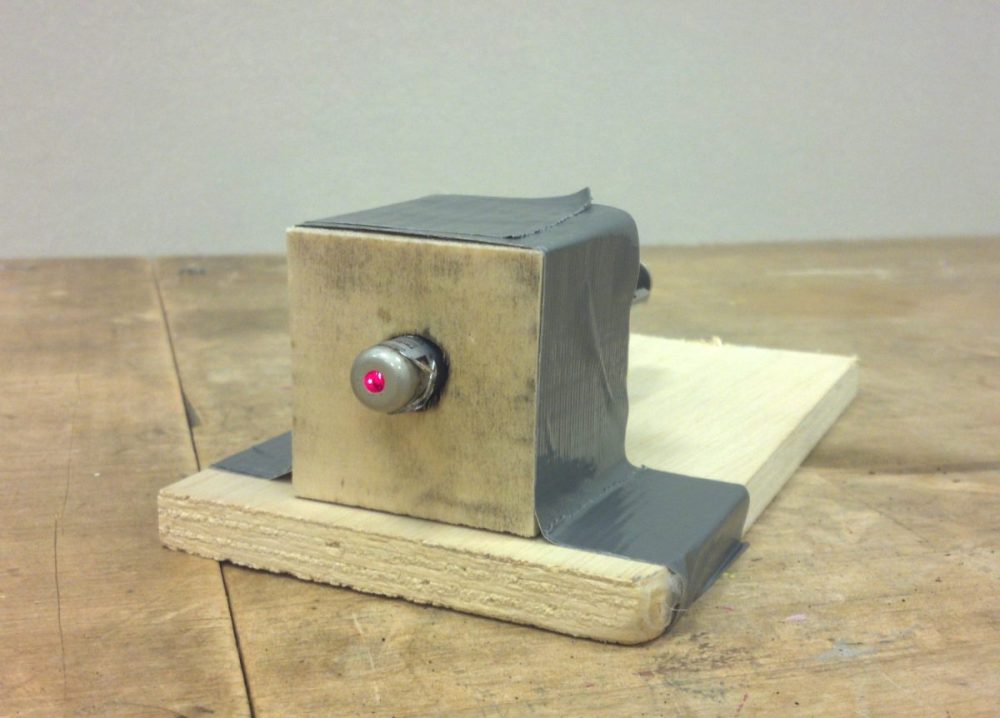I’ve been continuing my work on the Triple Helix project, specifically the jump detection hardware. Although the original workshop used pressure plates for jump detection, these were very bulky and hard to transport, and because of that I’ve developed a photogate to replace the plates.


The photogate consists of an emitter and a receiver that can be placed on the ground. The emitter is just a handheld laser pointer in a wooden stand that fits it snugly enough to hold the button in the “on” position. The receiver is a cadmium sulfide photoresistor in series with a resistor and attached to an Arduino that reads and reports the analog voltage between them. The voltage data is sent to the Python program, which plots it along with supplemental data such as the jump airtime and jump height. To explain how the jump is calculated, a little physics is required.
When a person jumps off the ground from a standing position, their height (h) with respect to time can be given as

where v is the initial jump velocity, t is the time after the jump in seconds and g is the gravitational constant, 9.81 meters per second per second.
Using this equation we can derive the expression for maximum jump height, which is the following:

However the photogate doesn’t measure the initial velocity for us. What it does measure are the start and end times of the jump (the two times that the laser is tripped). By setting the height of the motion equation to zero, we can write expressions for these times.


We can think of the second of these two numbers as representing our total air time:

Now we can combine this expression with our previous expression for maximum height to get maximum height in terms of quantities that our photogate can measure:

This equation is used live by the Python photogate program to calculate jump height. Here is a video demo of the photogate in action.
I still need to calibrate my programs so that the timekeeping the Python program does while determining airtime is accurate. I’ll also want to build a better housing for the receiver.
One final note – the files related to this photogate will be going into the GitHub repo here.


Comments
No comments yet. Be the first to react!